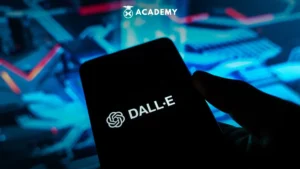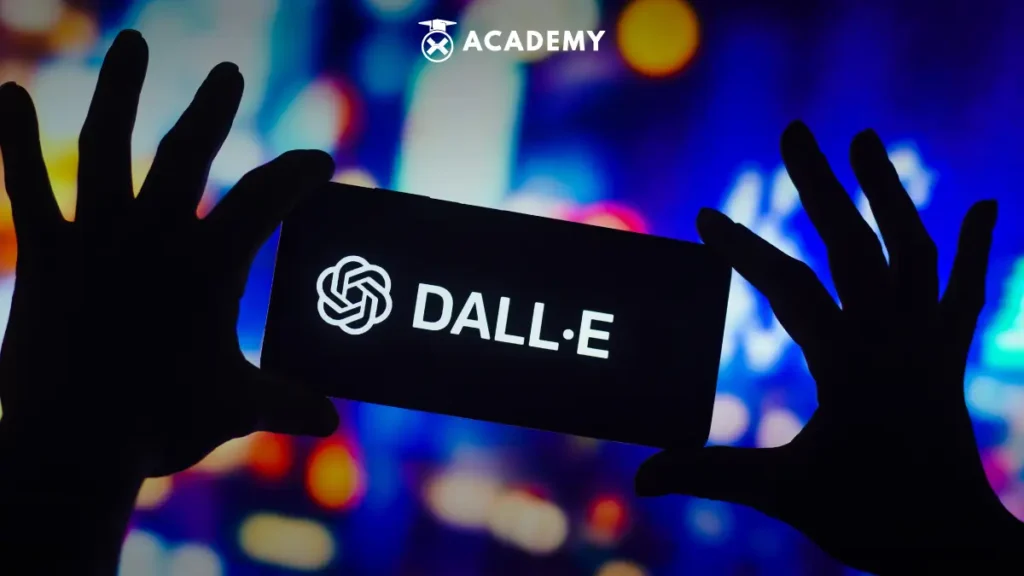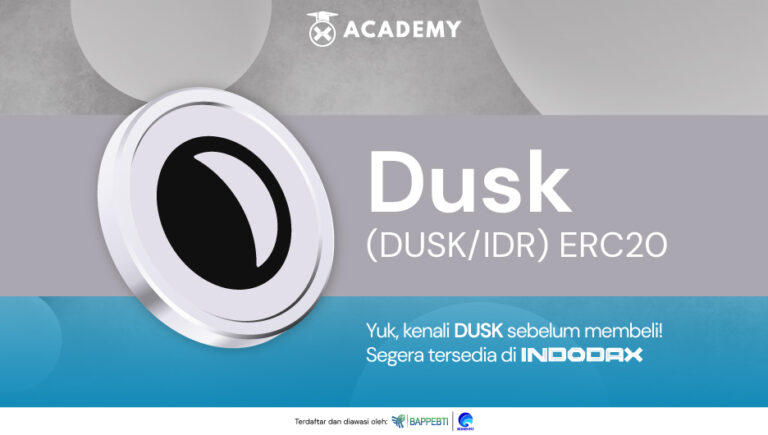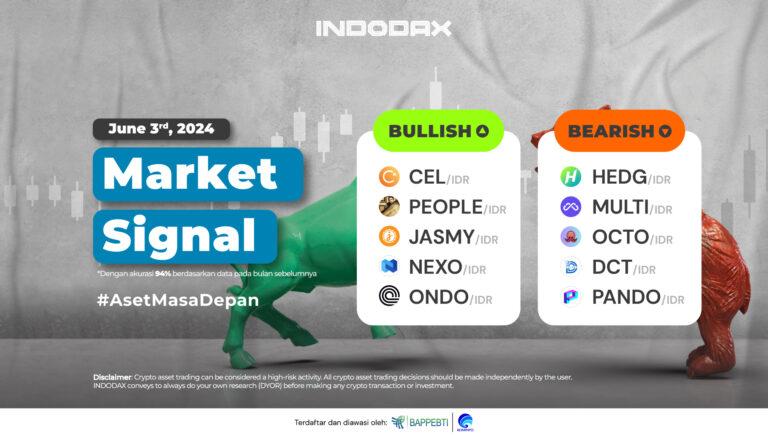Artificial Intelligence (AI) technology has become an inseparable part of human life. Progress continues at an impressive pace. One of the breakthroughs is DALL E AI, an innovation that can convert text into images.
The presence of DALL E AI has brought an important revolution in digital art and presented a new dimension to human creativity. With its ability to transform text into extraordinary images, DALL E AI opens the door to innovative and limitless artistic expression.
Most recently, as quoted from the openai.com/blog page, the DALL E AI Application Programming Interface (API) is now available in public beta. From now on, developers can start building applications with the DALL E API.
So, to understand what DALL E AI is, starting from its history and evolution, advantages and disadvantages, how it works, the future, and how to use it, see the full review below!
History and Evolution of DALL E AI
DALL E is a system created by Open AI that can produce realistic images based on text instructions. The name DALL E comes from a combination of the famous artist Salvador Dali and the film character WALL-E produced by Pixar.
DALL E’s advantage lies in its ability to respond to commands or prompts in seconds. First released in January 2021, DALL E has experienced significant development, and a second version has even been introduced, namely DALL E 2.
The appeal of this technology is growing, especially among artists who see DALL E as a tool that can help them create works of art just by writing a few words.
After the success of DALL E 2, OpenAI recently announced the launch of the latest generation of their image generator, namely DALL E 3. As the successor to the previous generation, DALL E 3 is recognized as having more sophisticated advances in processing images based on text or complex commands the user desires.
In contrast to DALL E 2, DALL E 3 has a stronger focus on creating security to prevent generating inappropriate images by generators. DALL E 3 has also been trained to refuse to produce images that imitate the work of others. However, DALL E 3 is limited to Chat GPT Plus customers with a monthly subscription fee of $20 or the equivalent of IDR 308,000.
Pros and Cons of DALL E AI

As an advanced AI technology, DALL E provides various conveniences for its users. Of course, the emergence of DALL E also raises some pros and cons that must be considered before using it.
The following are some of the pros and cons of DALL E AI that users need to know:
1. Pros of DALL E AI
- DALL E is the ideal platform for creating digital works of art. Content professionals such as bloggers and publishers can use this capability because the resulting images can be used commercially.
- Image editing with DALL E can be done without requiring advanced design or photography skills. Users only need to provide orders and details according to the desired image.
- All images produced by DALL E are not licensed, so copyright or image ownership is fully owned by the user who gave the order.
- DALL E can be accessed for free. Free users can get 50 images in the first month and 15 free images in subsequent months.
2. Cons of DALL E AI
- Even though it is described as a system capable of creating realistic images, the images produced by DALL E tend to be surreal. They are not yet fully capable of producing images with realistic or natural images such as natural scenes or urban settings.
- The quality of the images produced by DALL E depends on the commands’ details, so sometimes the results do not match expectations. Therefore, OpenAI advises users to provide commands as clearly as possible.
- DALL E can only receive commands in English, and its ability to process language is still limited. Additionally, DALL E cannot produce images if the command involves more than three connected objects, numbers, or sentences.
- Like many other AI generator implementations, DALL E has also received criticism for potentially reducing the need for professional creative workers.
How DALL E AI Works
DALL E’s AI generator model can generate highly detailed visuals based on verbal descriptions. The model integrates concepts from language and image processing to achieve these capabilities. The following is an explanation of how DALL E works, including:
Training Data
DALL E is trained using a large dataset containing pairs of photos and their associated text descriptions. The relationship between visual information and written representations is taught to the model using these image-text pairs.
Autoencoder Architecture
DALL E was built using an autoencoder architecture consisting of two main parts: the encoder and the decoder. The encoder receives an image and reduces its dimensions to create a representation called latent space. The decoder then uses this latent space representation to create an image.
Conditioning on Text Prompts
DALL E adds a positioning mechanism to the conventional autoencoder architecture. This shows that DALL E positions its decoder based on text-based instructions or explanations when creating images. Text hints influence the appearance and content of the resulting image.
Latent Space Representation
DALL E learns to map visual cues and written text into a shared latent space using latent representation techniques. This latent space representation functions as a bridge between the visual and verbal worlds. DALL E can create visuals that match the given text description by conditioning the decoder on certain text cues.
Sampling From The Latent Space
DALL E selects points from a latent space distribution that has been learned to produce images from text instructions. These selected points become the starting points of the decoder. DALL E generates visuals that correlate with given text clues by modifying and decoding selected points.
Training and Fine Tuning
DALL E undergoes a thorough training procedure using state-of-the-art optimization methods. Models are taught to accurately reproduce original images and find relationships between visual and written clues. The model performance is improved through fine-tuning, allowing the model to produce high-quality images based on various text inputs.
Can DALL E AI Unlock Opportunities in the Digital Art Market?
The digital art market has undergone enormous changes, especially with the emergence of Non-Fungible Tokens (NFT) as a unique medium for digital artwork. In this regard, DALL E AI technology opens up exciting new opportunities for artists.
DALL E AI, with its ability to produce realistic images based on text instructions, allows artists to explore innovation in their work. By turning text into images, DALL E helps create unique and evocative works of art. Then, DALL E also allows artists to create unique and different NFTs. Through combining text instructions with artificial intelligence, artists can explore deeper ideas, creating works that have particular artistic value and uniqueness.
The NFT market can be expanded with automatically generated and innovative works with DALL E. Artists using DALL E can reach a larger audience in the NFT market because their work has a unique appeal and can meet growing demand. DALL E also speeds up the creative process by responding to commands or prompts in seconds. Not only does it allow artists to increase productivity, but it also unlocks the potential for faster collaboration and creative growth.
Safety and Ethics in the Use of DALL E AI
OpenAI has taken several steps to ensure the safe use of DALL E AI.
By implementing these steps, OpenAI is committed to ensuring that DALL E AI is used safely and ethically and respecting copyright and diversity values in digital art production. Here are some steps, namely:
1. Harmful Generator Restrictions
- OpenAI has limited DALL E AI’s ability to generate images of a violent, hateful, or adult nature.
- Selecting the most explicit content from the training data helps reduce DALL E AI’s exposure to these concepts.
2. Use of Advanced Techniques
- Application of advanced techniques to prevent photorealistic generators from real individual faces, including public figures.
- Efforts to identify and mitigate potential risks associated with creating images that could have negative impacts.
3. Strict Content Policy
- OpenAI’s content policy prohibits users from producing violent, adult, or political content, as well as other categories that may violate ethics or the law.
- Automatic filters will stop the image generator if text instructions or image uploads violate policies.
4. Automatic and Human Monitoring
- Implementing automated and human monitoring systems to supervise the use of DALL E AI.
- A combination of automated monitoring and human intervention helps prevent abuse and protect user security.
Efforts to Prevent Misuse of Works of Art and Copyright
In addition, OpenAI also makes various efforts to prevent misuse of works of art and protect copyright. The following are some of these efforts, including:
1. Clear Content Policy
- OpenAI’s content policy strictly prohibits the use of DALL E AI to produce works of art that are violent, adult, or political in nature.
- These restrictions ensure that the resulting work of art remains under ethical and legal norms.
2. Filter and Identify Copyright Violations
- Automatic filters are configured to identify text or image instructions that may infringe copyright or use copyrighted content.
- This identification helps prevent image generators from creating legal issues related to copyright.
3. Collaboration with Interested Parties
- OpenAI collaborates with interested parties, including copyright holders, to understand and address concerns regarding using DALL E AI.
- Collaborative steps are taken to optimize regulations and policies that can protect works of art and copyright.
Ethical Challenges and Considerations
By responding to criticism and continually improving its technology, OpenAI seeks to take ethical challenges seriously while prioritizing the responsible development and use of artificial intelligence technology.
The following is an overview of the criticism and challenges faced by DALL E technology, including:
1. Potential for Abuse
- Criticism: Technology like DALL E can be misused to produce content that is harmful, disturbing, or violates ethics.
- Challenge: Managing the risk of misuse and ensuring that technology does not negatively contribute to society.
2. Language and Context Limitations
- Criticism: Limited ability to understand certain languages and contexts, possibly resulting in undesirable interpretations.
- Challenge: Continuously develop the model to improve understanding of language and context so that responses are more accurate and appropriate.
3. Impact on Artists’ Work
- Criticism: AI’s ability to produce works of art raises concerns about replacing the jobs of human artists.
- Challenge: Managing creative automation’s social and economic impact and encouraging collaboration between AI and human artists.
4. Copyright Concerns
- Criticism: Content autogenerators may involve copyright and intellectual property issues.
- Challenge: Develop adequate copyright protection mechanisms and work with copyright holders to understand and address their concerns.
To respond to criticism and improve its technology, here are several steps taken by OpenAI, namely:
- OpenAI provides transparency about the security measures taken and technology limitations through public communications and documentation.
- DALL E is trained by eliminating explicit content that could be harmful and by implementing strict content policies.
- OpenAI collaborates with ethicists, artists, and stakeholders to gain diverse input and perspectives.
- OpenAI continually iterates on the model and implements continuous improvements based on user feedback and research findings.
- OpenAI maintains a commitment to user security and ensures its content policies do not allow content generators that could cause harm.
The Future of DALL E AI and Digital Arts

Regarding the future of DALL E AI and digital art in general, there are several predictions regarding the future evolution of DALL E. One of them, DALL E, is expected to experience an increase in his creative abilities and produce increasingly complex and innovative works of art based on text instructions. The evolution of DALL E is also considered to bring expansion in recognizing and reproducing various artistic styles, opening the door to more creative collaboration and exploration of diverse aesthetics.
DALL E is also expected to be more sophisticated in understanding the context of text instructions and ensuring its responses are more contextual and in line with the user’s intentions. Furthermore, DALL E may be integrated with other technologies, such as augmented reality (AR) or virtual reality (VR), thereby opening up new opportunities for creating interactive digital art. In addition, there is also the possibility of increased collaboration between human artists and DALL E, where technology becomes a creative tool that enriches the process of art creation.
On the other hand, DALL E’s role in developing digital art and NFTs cannot be doubted. One of them is that DALL E can play a role in bringing innovation to the NFT world by providing more options for artists to produce digital works that can be sold as NFTs. Then, DALL E can help artists produce NFTs that are truly unique, reflect their creative vision, and combine artificial intelligence with the essence of human art.
With growing creativity, DALL E can also increase the attractiveness of the NFT market by presenting different works and following the latest digital art trends. Artists can use DALL E to explore new art styles, creating works that combine traditional elements with artificial intelligence. Another role is that DALL E can help encourage understanding digital art and expand appreciation of works produced through collaboration between humans and artificial intelligence.
How to Use DALL E AI
After understanding the challenges for the future, now is the time to find out how to use DALL E AI. Here are some simple steps to use DALL E that you can try:
- First, access the DALL E website at https://labs.openai.com/
- Create an account for free to access the homepage.
- In the search field, enter the command or prompt you want to use to generate the image, then click “Generate.” If you don’t have an idea, the user can immediately click “Surprise me.” For example, try the prompt “A futuristic cityscape with flying cars, vibrant neon lights, and advanced architecture,” and the results will appear.
- Select an image, and users can save it by selecting “Save,” share it with the “Share” option or edit it with the “Edit” option.
Conclusion
In conclusion, DALL E was first introduced in January 2021 and has experienced rapid progress. Its successor version, DALL E 2, was successfully released with improvements in terms of features and capabilities. The technology is increasingly in demand, especially among artists who see DALL E as a tool that can help them create works of art simply by providing written instructions.
After the success of DALL E 2, OpenAI recently announced the launch of the latest generation of their image generator, namely DALL E 3. As the successor to the previous generation, DALL E 3 is recognized as having more sophisticated advances in processing images based on text or complex commands from the user.
Compared to DALL E 2, DALL E 3 has a stronger focus on security, intending to prevent the creation of inappropriate images by the generator. DALL E 3 has also been trained to refuse to produce images that imitate the work of others. Furthermore, it is also important to note that DALL E 3 is limited to Chat GPT Plus customers, with a monthly subscription fee of $20 or the equivalent of IDR 308,000.
So, now you understand what DALL E AI is, starting from its history and evolution, advantages and disadvantages, how it works, the future, and how to use it.
Furthermore, you can also read other interesting articles about the world of AI chat, starting from Chat GPT, 6 Differences between Perplexity AI vs Chat GPT, to Humata, an advanced AI platform only on INDODAX Academy.
To expand your knowledge about blockchain technology, you are highly recommended to read the latest articles on INDODAX Academy.
INDODAX Academy provides material that covers basic concepts to more complex aspects related to blockchain technology.
By reading the various articles available on INDODAX Academy, you can gain a deeper understanding of this technology, including its application in various contexts, and also get the latest updates regarding the world of crypto.
Let’s continue to increase your knowledge about blockchain and crypto assets with INDODAX Academy!








